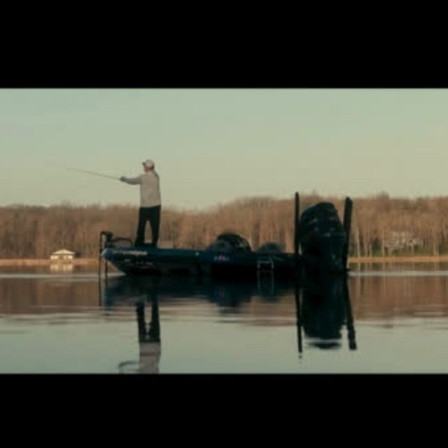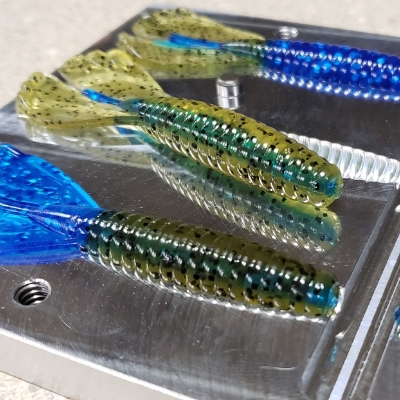Summer Solstice: The Fishing Significance
By Angling Ai on 20th Jun 2024

Summer Solstice: The Fishing Significance
The summer solstice, June 20th, 2024, the longest day of the year in terms of daylight hours may seem like just another day. However, to fishermen, it is important to understand it’s significance. It is the official beginning of summer and this often affects fishing in several ways. Realizing how and why the fish react to their environmental conditions will improve your fishing trips and make them more enjoyable.
- Extended Daylight: With longer daylight hours, fishermen have more time to spend on the water. Fishermen can take advantage of this extended period, increasing their chances of a successful catch. With the sun high in the sky for an extended period, water temperatures tend to rise, which can stimulate fish activity. Overall, while the summer solstice doesn't guarantee a specific outcome for fishing, it does mark a significant shift in environmental factors that can influence fish behavior and the overall fishing experience.
- Changes in Fish Behavior: With the sun high in the sky for an extended period, water temperatures tend to rise, which can stimulate fish activity. Fish behavior is influenced by the longer daylight hours. Some species may feed more aggressively during this time, while others may change their feeding patterns or move to different areas of the water body. Warmer water temperatures can stimulate fish metabolism, leading to increased activity levels. Many fish species are more active in warmer water, making the summer solstice an ideal time for fishing.
- Temperature Changes: Depending on the region, the summer solstice can coincide with warmer temperatures. This may lead to changes in water temperature, affecting fish behavior. In many cases, fish will move to shallower areas of a water body as temperatures rise. Shallow areas tend to warm up more quickly than deeper waters, providing fish with comfortable conditions for feeding, spawning, and other activities. Warmer water temperatures during the summer solstice can attract a diverse range of fish species to shallower waters, providing anglers with opportunities to target different types of fish. While warmer water can be beneficial for some species, excessively high temperatures can become stressful for fish. In response, they may seek out cooler areas within the water body, such as deeper waters, shaded areas, or areas with faster currents where cooler water may be flowing.
- Spawn Timing: For certain species, the summer solstice marks a critical time for spawning. This can lead to increased activity as fish seek out mates and suitable spawning grounds. Anglers who understand the spawning habits of their target species can capitalize on this period for successful fishing. Fish such as bass and panfish may be actively spawning during this period, which can impact their feeding habits and locations. Water temperature plays a crucial role in the spawning behavior of various fish species, including Large Mouth Bass, Small Mouth Bass, and Panfish. While specific temperature preferences may vary slightly depending on factors such as geographic location and local conditions, here are some general temperature ranges for spawning:
- Large Mouth Bass:
- Spawning Temperature Range: Typically between 62°F to 68°F (16.7°C to 20°C).
- Large Mouth Bass usually begin spawning when water temperatures reach the mid-60s Fahrenheit. They prefer shallow, protected areas with vegetation or structure for nesting.
- Small Mouth Bass:
- Spawning Temperature Range: Generally between 58°F to 64°F (14.4°C to 17.8°C).
- Small Mouth Bass tend to spawn in slightly cooler water temperatures compared to Large Mouth Bass. They often spawn in rocky areas, gravel beds, or sandy bottoms in shallow waters.
- Panfish (e.g., Bluegill, Sunfish, Crappie):
- Spawning Temperature Range: Typically between 65°F to 75°F (18.3°C to 23.9°C).
- Panfish species have varying preferences for spawning temperatures, but they generally spawn in warmer water temperatures compared to bass. They often prefer shallow, weedy areas or near submerged structures for spawning.
It's important to note that these temperature ranges are general guidelines, and spawning behavior can be influenced by other factors such as photoperiod (length of daylight), water clarity, and available habitat. Additionally, individual fish within a population may exhibit some variability in their spawning preferences. Anglers who understand the preferred spawning conditions of the fish they're targeting can use this knowledge to locate potential spawning areas and increase their chances of success during the spawning season. However, it's essential to practice responsible angling and conservation practices, especially during spawning periods, to help maintain healthy fish populations for the future. Altered Habitat: Longer days and increased sunlight can also lead to changes in aquatic vegetation growth, oxygen levels, and water clarity, all of which can impact fish behavior and feeding patterns. Warmer water temperatures can decrease the amount of dissolved oxygen in the water, as oxygen has lower solubility in warmer water. This can affect fish behavior and distribution, as fish may need to move to areas with higher oxygen levels to avoid hypoxic (low oxygen) conditions.
Overall, warmer water temperatures can create dynamic conditions in aquatic ecosystems, influencing fish behavior, feeding patterns, and habitat preferences. Anglers who understand how temperature affects fish can use this knowledge to adapt their fishing strategies and increase their chances of success on the water.
Popular Soft Plastic Baits:
- Stick Worms: Stick bait-style worms are versatile soft plastic baits that can be rigged weightless or with a weighted hook. They have a subtle action as they sink, making them effective for targeting bass in deeper water or around structure.
- Curl Tail Worms: Curl tail or ribbon tail-style worms work great around ledges and cover as the temperatures of the day increase and fish find deeper cooler water temperatures. Texas rigging and split shot rigs will help increase your chances of a quality bite.
- Creature Baits: Creature baits mimic various aquatic creatures like crawfish, frogs, or insects. They can be rigged Texas or Carolina style and are effective for flipping and pitching into heavy cover.
- Swimbaits: Soft plastic swimbaits imitate baitfish and can be rigged on a swimbait hook or jighead. They are effective for covering water and targeting bass in open water or along weed edges.



